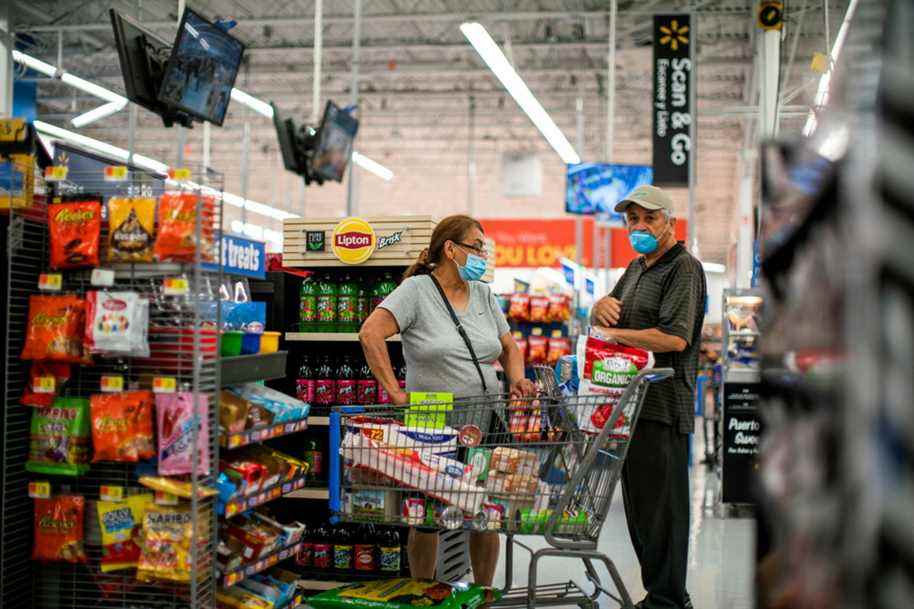(Washington) The price index favored by the US Central Bank, the PCE, rose in March to its highest level since 1982, which should confirm the financial institution in its desire to raise its rates more aggressively.
Posted at 4:11 p.m.
Especially as consumer spending, which traditionally underpins growth in the world’s largest economy, continued to rise, according to Commerce Department data released Friday.
Federal Reserve (Fed) Chairman Jerome Powell has already indicated that a half-percentage-point hike will be “on the table” at the next meeting on May 3-4.
The US is facing skyrocketing prices, made worse by Russia’s February 24 invasion of Ukraine.
Last month, the PCE index climbed another 6.6% over one year and 0.9% compared to February.
Energy prices rose even faster (+33.9%) while food prices jumped 9.2% year on year, the ministry said in a statement.
Excluding food and energy, the PCE price index slowed marginally (-0.1 percentage point). At 5.2%, it remains at a high level.
Last month, households paid more for everything, so to speak. Their consumer spending therefore partly reflects this sharp rise in prices, with an increase of 1.1% compared to February.
Tap into savings
Still, economists say higher spending bodes well for second-quarter growth.
Admittedly, the item of expenditure for gasoline and gas weighs heavily in the household budget, in particular in that of low-income households.
But experts point out that households with higher purchasing power have started to travel again, go to restaurants, cinemas and theaters and do not seem deterred by the prices.
Consumption is indeed the historical engine of American growth and services are a significant sector in the United States.
“The rapid escalation in prices was not enough to dissuade consumers from spending in March,” Lydia Boussour, an economist at Oxford Economics, summed up in a note.
However, it notes that after adjusting for price increases, “real expenditure only increased by 0.2%”.
Ian Shepherdson, chief economist at Pantheon Macroeconomics, said spending likely continued in April “because most auto industry watchers estimate new vehicle sales were up about 9% month-over-month.” ‘other “.
To spend, households had to dip into their savings, their income having increased by only 0.5%. The savings rate fell to 6.2% from 6.8% the previous month, its lowest level since December 2013.
Economists say there is no cause for concern given the huge savings accumulated during the pandemic from being unable to spend due to travel and outing restrictions.
According to Ian Shepherdson, this will only become a problem “if people continue to spend more than their income once their stock of savings is exhausted”. “It will take many years at the current rate,” he said.
Ultimately, believes Lydia Boussour, “admittedly, consumers’ tolerance for high inflation will continue to be tested, but the rise in spending in March […] constitutes a solid relay […] for second-quarter GDP growth.
“Robust growth in labor incomes, record levels of household wealth and a large savings surplus suggest that consumer spending should remain well supported,” she also commented.
